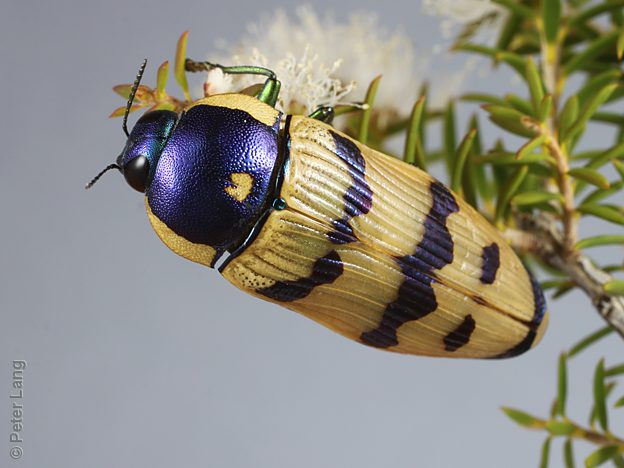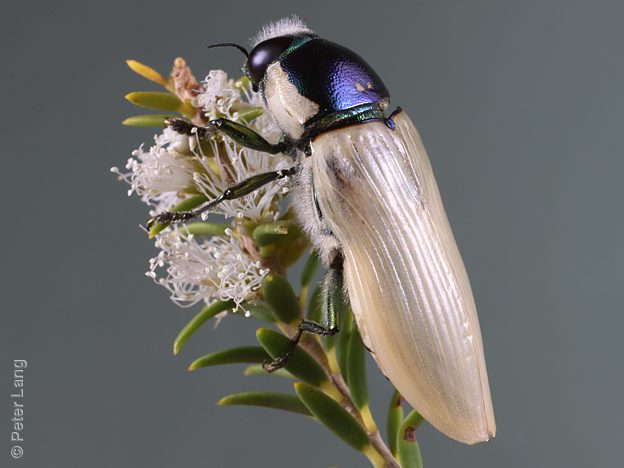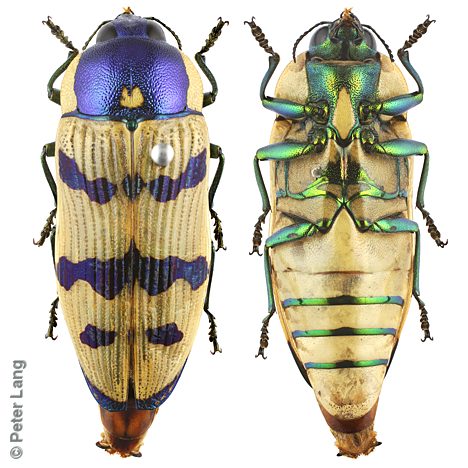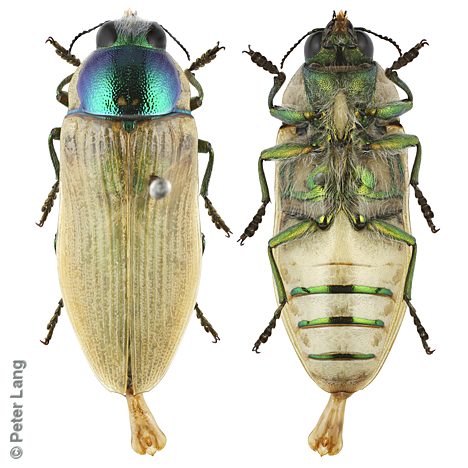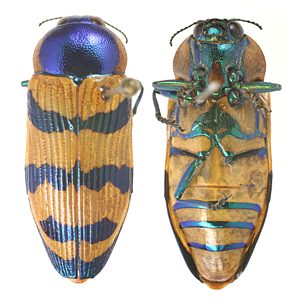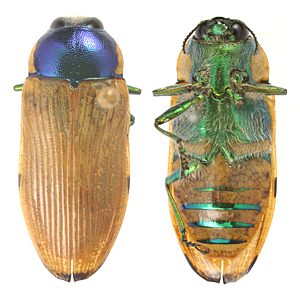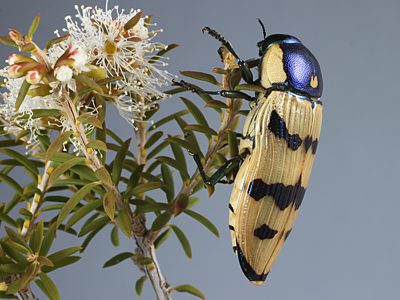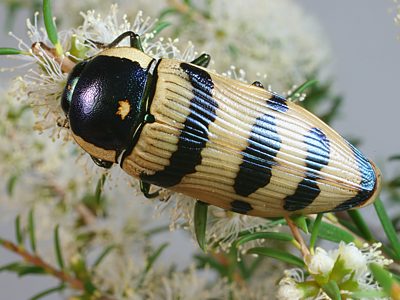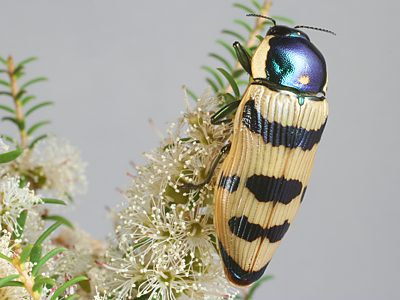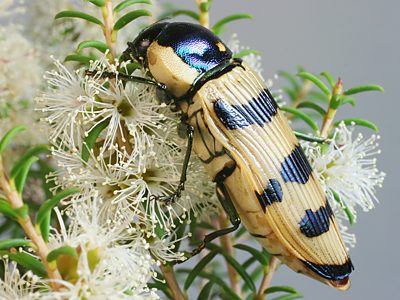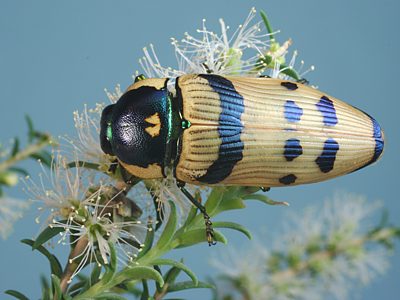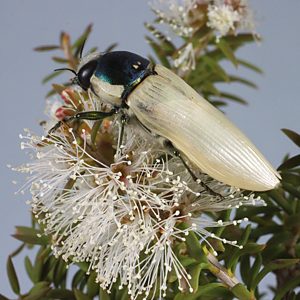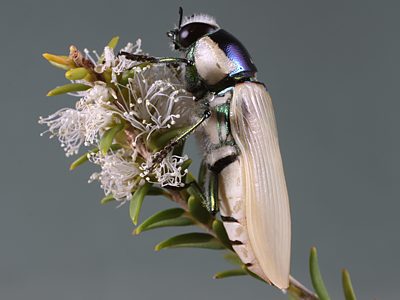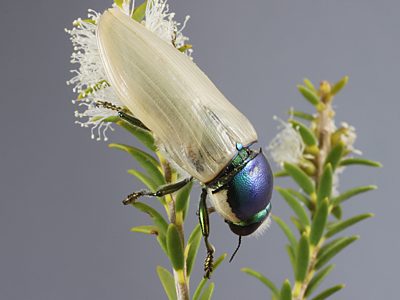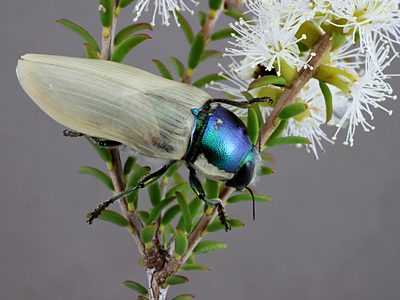Resembles Temognatha mitchellii but with metallic blue to green reflections on head and pronotum and on dark areas above and below. Females have a distinctive bicornate, sclerotised ovipositor structure and the subtantially smaller males lack the dark bands on the elytra.
Peterson 1991c erected the subgenus Calotemognatha for three Temognatha species with a distinctive modified ovipositor. The characteristic strongly sclerotised ovipositor valves with projecting horns are visible in the third image above. The significance of these characters was re-evaluated by Bellamy & Peterson 2000 who then elevated Calotemognatha as a separate genus.
The genus has a western centre of diversity, with the other two Calotemognatha species and the other two C. yarelli subspecies being confined to WA.
Adults are found on summer-flowering Myrtaceae and show a strong association with Melaleuca which is suspected to be its larval host. Tepper 1887 recorded that 'the beetles are found in November or later on the flowers of Melaleuca parvifolia [= M. lanceolata] and M. acuminata, in the Murray scrub and elsewhere'.
| ¹ Legend | regions | SA State Herbarium regions (map)
EA: Eastern, EP: Eyre Peninsula, FR: Flinders Ranges, GT: Gairdner-Torrens, KI: Kangaroo Island, LE: Lake Eyre, MU: Murray, NL: Northern Lofty, NU: Nullarbor, NW: North-Western, SE: South-Eastern, SL: Southern Lofty, YP: Yorke Peninsula |
| size | The ellipse is the correct size when printed, indicative on a desktop screen, and likely to be wrong on a mobile device. |
